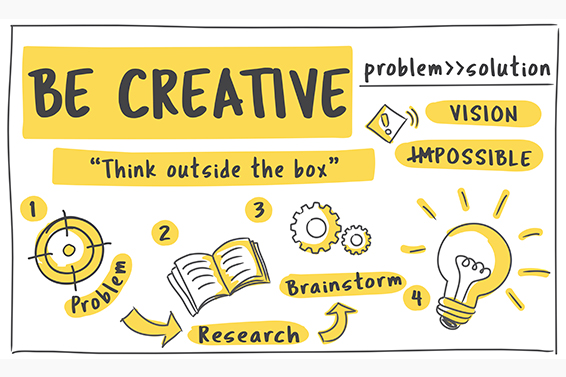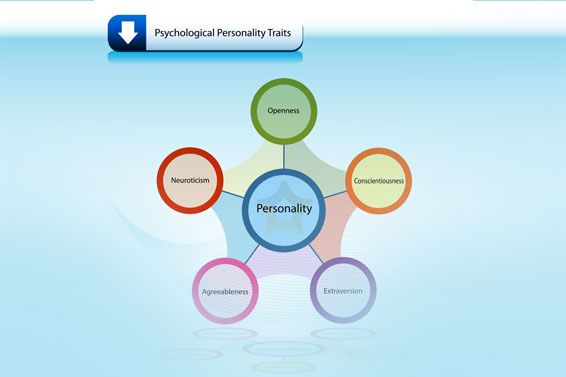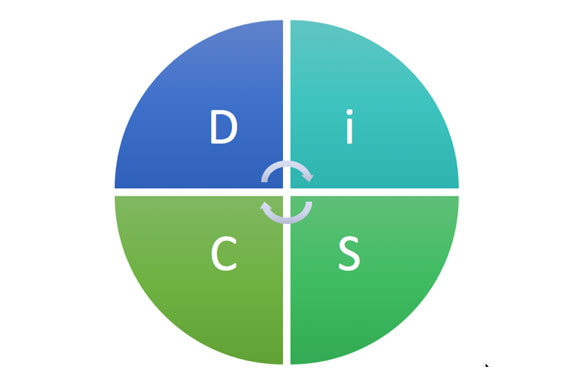WORKPLACE ASSESSMENTS

Why Is Understanding Personality at Work Important?
How people behave, react, and engage with others impacts the bottom line. Learning about personality can improve how individuals communicate, motivate, and persuade others.

Frustrated Coworkers
Susan, Terri, and Tom have been working together for years. Although they all get along fairly well, they are frequently frustrated by each other. Susan can’t understand why Terri gets so upset over minor changes or issues and seems to rehash them for weeks. Terri can’t understand why Susan is so “matter-of-fact” and insensitive all of the time, dismissing issues almost as soon as they are identified. And, neither Susan nor Terri can understand why Tom has to question everything all of the time.
Battling Bosses
Zack and Melody manage two competing sales divisions. Zack’s group is known for providing outstanding service and Melody’s group is known for closing deals quickly. Both are constantly bad mouthing and blaming the other for problems occurring with shared accounts. Senior management is fed up with their behavior and expects them to resolve their conflicts and create an environment of mutual respect or both will be asked to step down even though they are both valuable team members.
Top Performer
Lee out-performs everyone in the department and has consistently had outstanding reviews from his manager and customers. Senior management wants to know how he does this and if he can be cloned.

WorkPlace Big Five Overview
The WorkPlace Big Five Profile TM uses the most widely accepted personality traits around the world.
The WorkPlace Big Five Profile TM is a personality assessment based on the Five-Factor Model of Personality, the current standard for psychologists. It can easily be completed online in 10-15 minutes. The WorkPlace is written in straightforward language specifically for business applications. The WorkPlace measures 5 traits and 23 subtraits that reveal how individuals:
- Approach tasks and responsibilities.
- Express oneself and interact with others.
- Take into consideration others' opinions and feelings.
- Respond to adversity or pressure.
- Are open to various interests and ideas.

What Are the Benefits of WorkPlace Assessments?
Join the thousands of organizations around the world who are increasing their bottom line by using the
WorkPlace Big Five Profile TM.
Clients have benefited from the WorkPlace Big Five Profile TM by:
- Developing effective leaders.
- Improving team communication and productivity.
- Selecting the best candidates.
- Understanding behavioral tendencies and how they affect employee alignment, engagement, and productivity.
- Achieving workplace goals and objectives effectively.
- Increasing individual performance.
- Minimizing turnover.
- Maximizing engagement.

How Can WorkPlace Assessments Be Used?
The WorkPlace Big Five ProfileTM is designed for a variety of uses with people in the workforce.
Application opportunities for WorkPlace Big FiveTM results include:
- Team Development and Effectiveness
- Executive and Individual Coaching
- Pre-Employment Screening and Selection
- Job Profiling
- Succession Planning
- Career Planning
- Competency Assessment and Development
- Training classes, where a reference to personality traits is desirable, such as: Leadership Development, Sales, Communications, Conflict Resolution, Assertiveness, Customer Service, Diversity Issues, Problem-solving, Supervisor/Management Development

FAQ
Frequently Asked Questions about the WorkPlace Big Five ProfileTM
1What is the WorkPlace Big Five Profile?
The WorkPlace Big Five is based on the Five-Factor Model, the standard for personality assessment. Unlike many competitors in the market, it is not based on theories. Instead, the WorkPlace Big Five Profile is an empirical assessment, derived from applying advanced statistical techniques, to develop common language descriptors of personality.
2Is the WorkPlace Big Five Profile offered in languages other than English?
Yes, the WorkPlace assessment is offered in:
- Chinese-Simplified
- English
- Finnish
- French
- German
- Indonesian
- Japanese
- Portuguese
- Spanish-International
- Swedish
3Why should we change from the Myers-Briggs Type Indicator or DiSC?
The Five Factor Model is the choice of researchers because it is more precise and goes beyond “types” which only cover a small percentage of the population. The WorkPlace Big Five Profile offers greater depth and insights in a cohesive reporting framework. The Five-Factor Model better reflects the range of an individual’s uniqueness, going beyond categorizing individual’s into either/or buckets.
4How accurate and reliable is the WorkPlace Big Five Profile?
The WorkPlace Big Five Profile has an average coefficient alpha (a measure of reliability, or consistency) of .83 – one of the highest in the industry. More information on the psychometric properties of the WorkPlace and School Place Big Five Profiles is available in the Professional Manuals for each assessment or can be discussed in more detail by contacting Evoke Development.
5How much do your products cost?
Contact us for pricing information. We offer packages tailored to your organization’s needs.
6What services does Evoke Development offer?
We offer workplace assessments, accuracy training, and organizational development services. We also offer consulting services that apply information from our assessments and published material for work and school applications.
These services include:
- WorkPlace Big Five Certification
- Teambuilding
- Coaching
- Job Profiling
- Leadership Development
- Succession Planning
7Why use the WorkPlace Big Five Profile?
Because it is:
The best way to understand the benefits the WorkPlace offers is to take the assessment yourself! Contact us to find out how you can take the WorkPlace Big Five Profile™ 4.0.
- Based on the benchmark in measuring personality, the Five Factor Model.
- Fast and simple. Available online and only takes 10 to 15 minutes to complete.
- Clear and concise. Reports use easy to understand descriptors and graphics to enhance understanding and self-awareness for both individuals and teams.
- Reasonably priced compared to assessments of similar caliber.
- Designed for a variety of human resource and organizational development applications.
- Thoroughly reviewed by employment attorneys to ensure legally appropriate for hiring and selection.
- Psychometrically rigorous—based on a scientifically-backed model and not theory.
- Developed and supported by Paradigm Personality Labs.
- Widely accepted. It is used by The Center for Creative Leadership in its flagship leadership development program.
The best way to understand the benefits the WorkPlace offers is to take the assessment yourself! Contact us to find out how you can take the WorkPlace Big Five Profile™ 4.0.
8I want to use the WorkPlace Big Five Profile in my organization. How do I start?
Schedule an inhouse certification program with Evoke Development’s Master Trainer.
OR
Hire Evoke Development to administer, interpret, and provide workshops based on the WorkPlace Big Five Profile.
OR
Hire Evoke Development to administer, interpret, and provide workshops based on the WorkPlace Big Five Profile.

Blogs
Read blogs about Assessments.
June 22, 2010
When the Center for Creative Leadership’s flagship Leadership Development Program (LDP)® rolled out in June in its revised format, it included a new broad-based personality assessment — the WorkPlace Big Five Profile 4.0™. This assessment, published by Paradigm Personality Labs (formerly CentACS – Center for Applied Cognitive Studies) of Charlotte, NC, relates to people’s personalities in their everyday jobs. Instead of using clinical or psychological terms like many current personality assessments, the WorkPlace Big Five uses work terms and work-related […]
March 1, 2010
In a world full of choices, making the right career decision can be difficult. The career decision-making video, A Tour of Your Tomorrow (1993), by Rich Feller and Joe Vasos, allows individuals of all ages to see and understand many of the career choices available to them. The two-part video series divides the working world into six Holland type-of-interest categories: Crafts Scientific The Arts Social Business Office Operations Segments on each category encourage individuals to use their strengths and diversity […]
August 1, 2006
The 16 P-F is an objective personality test developed by Dr. Raymond Cattell. Using factor analysis, Cattell categorized 170 adjectives that described human behavior into sixteen dimensions or factors. These 16 source traits were then used to form his personality questionnaire. Factor Analysis – Cattell divided his data up into three categories for the factor analysis: L-data (information regarding the individual’s life history according to school and work records) Q-data (responses to questionnaires and individuals given to either the individual […]
June 2, 2006
The NEO inventories were developed by Dr. Paul Costa, Jr., and Dr. Robert McCrae to measure five broad dimensions of personality. Neuroticism (N) Extraversion (E) Openness (O) Agreeableness (A) Conscientiousness (C) Note: These broad categories were based on analysis of trait adjectives collected over the years and included in research by theorists such as Cattell and Norman. NEO4 & NEO PR-I Traits Domain Factor Description Neuroticism Looks at different forms of emotional distress and how individuals react by measuring factors such […]
June 2, 2006
The Personal Profile System® was first developed in 1972 based on William Moulton Marston’s two-axis, four-dimensional model that divides behavior into four distinct dimensions (abbreviated DiSC). Dominance Influence Steadiness Conscientiousness Note: Marston first published his book, Emotions of Normal People in the 1920s. Unlike his contemporaries, Marston focused on how normal people interacted in the world around them. Marston’s Model Marston’s Model was based on two perceptions: The environment as favorable or unfavorable. The person himself/herself as more or less powerful […]





